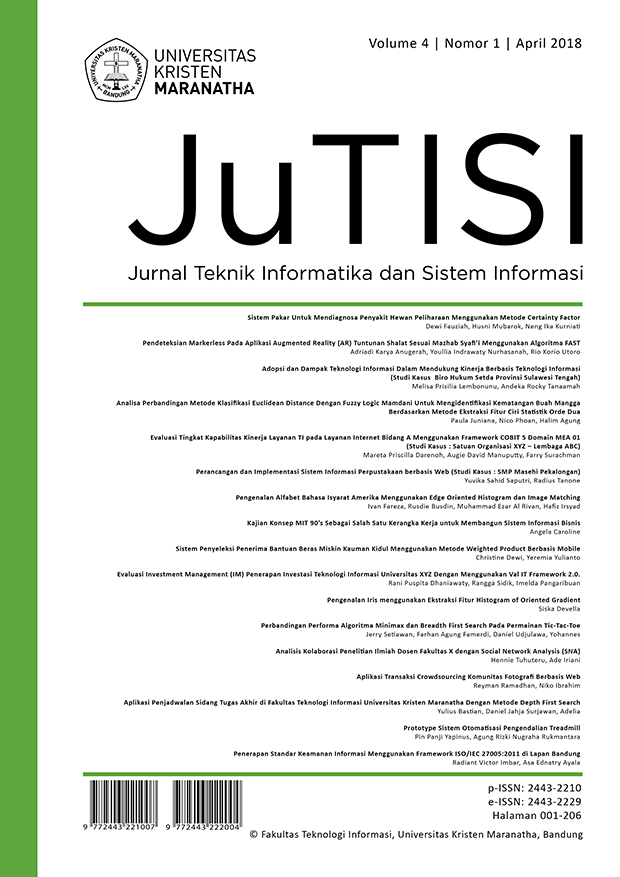Pengenalan Alfabet Bahasa Isyarat Amerika Menggunakan Edge Oriented Histogram dan Image Matching
Main Article Content
Abstract
Sign Language is a way to communicate to people with disabilities. American Sign Language (ASL) is one among other sign languages. Sign language image would be extracted using Edge Oriented Histogram (EOH). In Content-Based Image Retrieval, a feature from query image will be compared to database image to find out the best matching method so three matching methods will be used. The matching methods are Earth Mover Distance, Hausdorff Distance, and Sum of Absolute Difference. The smallest distance shows the strong similarity between query image and database image. The Sum of Absolute Difference is outperformed of other in case the most of relevant image can be retrieved. The order of methods to recognize alphabet (from the best one) is Sum of Absolute Difference following by Earth Mover Distance and Hausdorff Distance. Hausdorff Distance has smallest running time using 4 bin features. Earth Mover Distance has smallest running time using 6 bin features. Sum of Absolute Difference has smallest running time using 9 bin features, so the method can be recommended to recognize ASL.
Downloads
Download data is not yet available.
Article Details
How to Cite
[1]
I. Fareza, R. Busdin, M. E. Al Rivan, and H. Irsyad, “Pengenalan Alfabet Bahasa Isyarat Amerika Menggunakan Edge Oriented Histogram dan Image Matching”, JuTISI, vol. 4, no. 1, pp. 82 –, Apr. 2018.
Section
Articles
This is an open-access article distributed under the terms of the Creative Commons Attribution-NonCommercial 4.0 International License (https://creativecommons.org/licenses/by-nc/4.0/) which permits unrestricted non-commercial used, distribution and reproduction in any medium.
This work is licensed under a Creative Commons Attribution-NonCommercial 4.0 International License.

